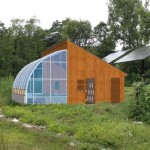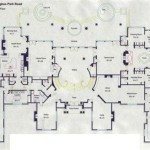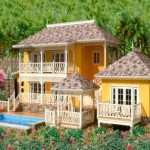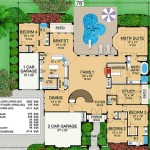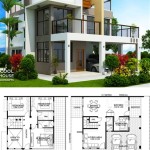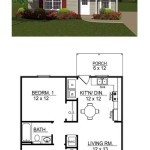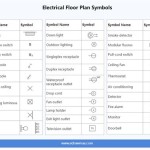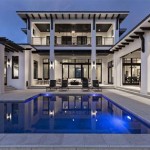Best Vastu Plan For East Facing House
Vastu Shastra, the ancient Indian science of architecture, provides a framework for harmonious living by aligning structures with natural energies. When applied thoughtfully, Vastu principles can significantly enhance the well-being and prosperity of the occupants. An east-facing house, in particular, holds significant potential according to Vastu, as it harnesses the beneficial energies of the rising sun.
Designing an east-facing house according to Vastu principles requires careful consideration of various aspects, including the placement of rooms, entry points, and the incorporation of natural elements. This article offers a comprehensive guide to creating a Vastu-compliant plan for an east-facing house, optimizing its positive energy flow and ensuring a balanced and prosperous living environment.
The significance of East in Vastu stems from its association with the sun, the source of light and life. A house that is properly aligned to the east allows for maximum exposure to the morning sun, which is believed to bring positive energy, vitality, and good health. However, simply facing east is not enough; adhering to specific Vastu guidelines is crucial to fully realize the potential benefits.
The main objective of a Vastu plan is to create a balanced and harmonious environment by optimizing the flow of positive energy (prana) throughout the house. This involves considering the cardinal directions, the placement of elements, and the proportions of the building. A well-designed east-facing house, according to Vastu, can lead to improved health, wealth, and overall well-being for its occupants.
Determining the True East and House Alignment
The first step in creating a Vastu plan for an east-facing house is to accurately determine the true east direction. This is essential because magnetic north, which is indicated by a compass, can differ from true north due to magnetic declination. This difference can lead to inaccuracies in the alignment of the house and affect the effectiveness of the Vastu principles.
Using a reliable method to determine true east is crucial. This can be achieved using a GPS compass that accounts for magnetic declination or by observing the sunrise and sunset positions over a period of time. Once the true east is established, the alignment of the house can be adjusted accordingly.
Ideally, the main entrance of an east-facing house should be located in the exact center or slightly towards the northeast quadrant of the eastern wall. This placement allows for maximum exposure to the positive energy of the rising sun and promotes good fortune. Avoid placing the main entrance in the southeast corner, as this is considered inauspicious according to Vastu.
The shape of the plot also plays a significant role in Vastu. A square or rectangular plot is considered ideal, as it provides a balanced and harmonious energy flow. Irregularly shaped plots may require adjustments to mitigate any negative effects. In the case of an irregular plot, consulting with a Vastu expert is recommended to determine the best course of action.
Furthermore, the slope of the land should ideally be towards the east or north. This promotes positive energy flow and ensures that rainwater drains away from the house. Avoid plots that slope towards the south or west, as this is considered unfavorable in Vastu.
Optimal Placement of Rooms in an East Facing House
The placement of rooms within an east-facing house should be carefully planned to maximize the positive energy flow and ensure the well-being of the occupants. Each room is associated with a specific element and direction, and placing them accordingly can significantly enhance their functionality and positive influence.
The living room is best located in the northeast or east portion of the house. This allows for maximum exposure to the morning sun and creates a welcoming and positive atmosphere. It's advisable to keep this area open and clutter-free to facilitate the flow of energy. Furniture should be arranged in a way that promotes comfortable interaction and avoids blocking any natural light.
The kitchen is ideally located in the southeast corner of the house. This direction is associated with the fire element, which is essential for cooking and nourishment. The cook should face east while cooking to harness the positive energy of the rising sun. Avoid placing the kitchen in the northeast corner, as this is considered inauspicious.
The bedrooms are best located in the southwest or south portion of the house. This ensures privacy and protection from the harsh rays of the afternoon sun. The master bedroom should ideally be in the southwest corner, as this is considered the most stable and grounding direction. The bed should be placed in such a way that the head faces south or west during sleep.
The study room or office is best located in the north or northeast portion of the house. This direction is associated with knowledge and wisdom, making it ideal for studying and working. The desk should be placed in such a way that the individual faces east or north while working or studying.
The bathroom and toilet should ideally be located in the northwest or west portion of the house. Avoid placing them in the northeast or southeast corners, as this can disrupt the positive energy flow. Ensure that the bathroom is well-ventilated and kept clean to maintain a hygienic and positive environment.
The staircase should ideally be located in the south or west portion of the house. Avoid placing it in the northeast corner, as this can obstruct the positive energy flow. The staircase should be designed in a clockwise direction, starting from the north and turning towards the south.
Strategic Use of Colors and Elements
The selection of colors and the incorporation of natural elements play a crucial role in enhancing the Vastu of an east-facing house. Colors have a significant impact on our mood and energy levels, while natural elements bring us closer to nature and promote a sense of balance and harmony. Choosing the right colors and elements can significantly improve the overall well-being of the occupants.
Light and calming colors, such as white, cream, yellow, and light green, are best suited for an east-facing house. These colors reflect light and create a sense of spaciousness and positivity. Avoid using dark or vibrant colors in the east portion of the house, as they can obstruct the flow of positive energy. In the living room, lighter shades of yellow or green can create a welcoming and cheerful atmosphere.
In the kitchen, using shades of orange or red, which represent the fire element, can enhance the cooking process. However, avoid using these colors excessively, as they can create a sense of restlessness. Balance them with lighter shades to create a harmonious and balanced environment.
In the bedrooms, using calming and soothing colors, such as light blue or lavender, can promote restful sleep and relaxation. Avoid using dark or vibrant colors in the bedroom, as they can disrupt the sleep cycle and create a sense of unease.
Incorporating natural elements, such as plants, water features, and natural materials, can significantly enhance the Vastu of an east-facing house. Plants bring life and vitality to the environment, while water features create a sense of peace and tranquility. Natural materials, such as wood and stone, connect us to nature and promote a sense of groundedness.
Placing plants in the northeast or east portion of the house can enhance the positive energy flow and bring good fortune. Water features, such as a small fountain or aquarium, can also be placed in the northeast corner to attract wealth and prosperity. However, ensure that the water is clean and flowing freely to maintain a positive environment. Avoiding placing cactus or thorny plants inside house.
Using natural materials, such as wooden furniture or stone flooring, can create a warm and inviting atmosphere. These materials also help to regulate the temperature and humidity of the house, creating a more comfortable living environment.
Mirrors can be strategically placed to enhance the Vastu of an east-facing house. Placing a mirror on the east wall can reflect the rising sun and amplify the positive energy flow. However, avoid placing mirrors in the bedroom, as they can disturb the sleep cycle and create a sense of unease.
By carefully considering the alignment, room placement, colors, and elements, one can create a Vastu-compliant plan for an east-facing house that promotes harmony, prosperity, and well-being.

27 Best East Facing House Plans As Per Vastu Shastra Civilengi One Floor 2bhk Plan

East Facing House Vastu Plan Tips And Things To Avoid

East Facing House Plan Vastu For

27 Best East Facing House Plans As Per Vastu Shastra Civilengi N Three Bedroom Plan

East Facing House Vastu Plan Unlock Prosperity And Positivity

27 Best East Facing House Plans As Per Vastu Shastra Civilengi One Floor 30x40 2bhk Plan

East Facing House Vastu Plan Best Tips For Homes The Packers Movers Official Blog

27 Best East Facing House Plans As Per Vastu Shastra Civilengi One Floor Simple

30x40 East Facing House Vastu Plan Pune Architects Alacritys

East Facing Vaastu Home Plan Subhavaastu Com

